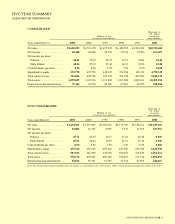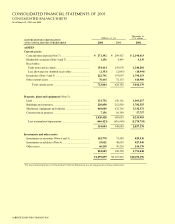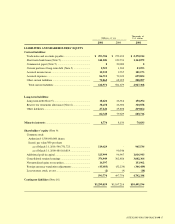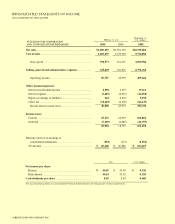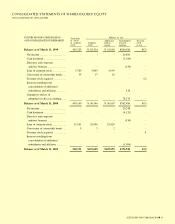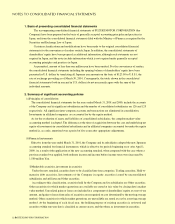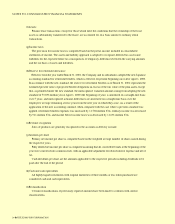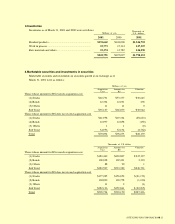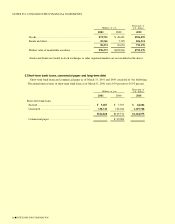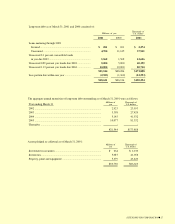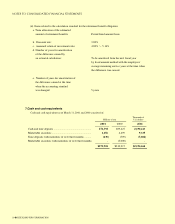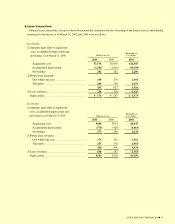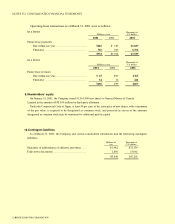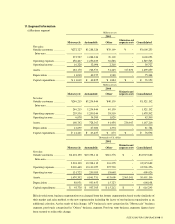Suzuki 2001 Annual Report Download - page 23
Download and view the complete annual report
Please find page 23 of the 2001 Suzuki annual report below. You can navigate through the pages in the report by either clicking on the pages listed below, or by using the keyword search tool below to find specific information within the annual report.
≠Hedge accounting
Gains or losses arising from changes in fair value of the derivatives designated as "hedging instruments"
are deferred as an asset or liability and included in net profit or loss in the same period during which the
gains and losses on the hedged items or transactions are recognized.
The derivatives designated as hedging instruments by the Company are principally interest swaps and
forward exchange contracts. The related hedged items are trade accounts receivable and investments in
securities.
The Company has a policy to utilize the above hedging instruments in order to reduce the Company's
exposure to the risk of interest rate and foreign exchange fluctuation. Thus, the Company's purchases of
the hedging instruments are limited to, at maximum, the amounts of the hedged items. The Company
evaluates effectiveness of its hedging activities by reference to the accumulated gains or losses on the
hedging instruments and the related hedged items from the commencement of the hedges.
(c)Foreign currency translation
Effective from the year ended March 31, 2001, the Company and its subsidiaries adopted the new Japanese
accounting standard for foreign currency translation, which is effective for periods beginning on or after
April 1, 2000. Under the new standard, all monetary assets and liabilities denominated in foreign currencies,
whether long-term or short-term are translated into Japanese yen at the exchange rates prevailing at the
balance sheet date. Resulting gains and losses are included in net profit or loss for the period. The adoption
of the new method had no material impact on the accompanying consolidated financial statements.
Under this standard, assets and liabilities of the foreign subsidiaries and affiliates are translated into
Japanese yen at the exchange rates prevailing at the balance sheet date. The shareholders' equity at beginning
of the year is translated into Japanese yen at the historical rates. Profit and loss accounts for the year are
translated into Japanese yen using the average exchange rate during the year or, alternatively, using the
exchange rates prevailing at the balance sheet date. Differences in yen amounts arising from the use of
different rates are presented as "foreign currency translation adjustments" in the shareholders' equity.
The effect of adopting the new accounting standard on the accompanying consolidated
financial statements was immaterial.
(d)Inventories
Inventories are stated at the lower of cost or market value, cost being determined principally by the
periodic average method.
(e)Property, plant and equipment
Property, plant and equipment are stated at cost. Depreciation is principally computed by the declining-
balance method based on estimated useful lives of the assets.
Provision for additional depreciation is made to reflect use of machinery and equipment in excess of
normal production schedules, a substantial portion of which is, however, not tax deductible.
Maintenance and repairs, including minor renewals and improvements, are charged to income as incurred.
SUZUKI MOTOR CORPORATION● 23
*ANNUAL REPORT2001/14のコピー 2




